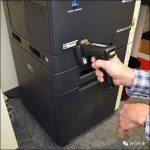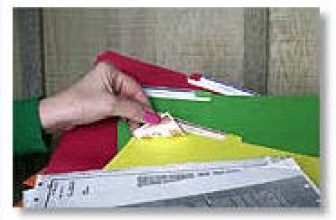
Dallas County Community College uses RFID technology to track 90,000 assets
[ad_1]
Dallas County Community College (DCCCD) is deploying an asset management system based on RFID technology to locate thousands of assets distributed across 7 campuses and 2 satellite campuses. The area is currently attaching tags to IT assets, musical instruments, medical equipment and animals in order to monitor the location of these assets. The school is equipped with fixed card reader entrances in some locations (such as computer laboratories) to identify the entry and exit of assets. This solution, called Virtual Asset Tracker (VAT), is provided by Radiant RFID.
DCCCD is a university composed of seven independent colleges in Brookhaven, Cedar Valley, Eastfield, El Centro, Mountain View, North Lake and Richland. Misherlae Pace, project coordinator of the DCCCD Regional Service Center, said that ultra-high frequency (UHF)-based RFID solutions are being deployed in these colleges.

(The employee attaches a tag to each item, and then uses an RFID reader to read the tag ID number)
Pace said the area has thousands of assets, and it is usually counted and audited once a year. These inventories are usually carried out from November to March of the following year, and the results will be audited after the inventory. She said: “It is a very difficult task to carry out inventory counts on every campus. Manual counts require a lot of money and often make mistakes.”
Therefore, in 2016, the region chose the VAT system provided by Radiant RFID, which includes TSL 1128 Sled handheld UHF RFID reader, fixed Impinj and Zebra readers, various RFID tags, RFID VAT software and on-site training And customer support. Radiant RFID sales and marketing director Megan Ward explained that DCCCD also uses the Radiant RFID VAT2Go application to connect to RFID location data collected by mobile devices.
Pace explained that DCCCD is using multiple software platforms, so it requires seamless integration and data sharing between the VAT system and these systems. Radiant RFID’s automatic import and export module makes this process easier.
The solution is expected to be fully operational later this year, using the following method: staff mark items such as routers, furniture, PCs, printers and musical instruments, and attach labels to the surface of each item. The tag ID number can be read by an RFID reader, bar code scanning or VAT2Go application for input. These ID numbers will be bound to the item description and serial number. Then, VAT will store the data and the location information of the item.
During inventory counting, employees will arrive at the room and enter the room number in the app, and then bind this information. In some cases, the college also affixed a barcode at the entrance of the room, which can then be read by a barcode scanner. Then, this information will be transmitted to the tablet via Bluetooth, and then transmitted to the hosting software.
The VAT software will also be integrated with the college’s inventory management software. If the tag ID assigned in the software has not been read, the system will display the missing item on the tablet or smartphone application.
The college hopes that the staff can count all the inventory in a single room through a handheld device in about three minutes. Previously, this time required more than one hour. The college intends to tag all devices worth more than $1,000 by November 2017, a total of 63,000 devices. In addition, 30,000 pieces of equipment worth less than US$1,000, such as laptops and tablets, will be marked. Approximately 80% of the labels are expected to be completed in June.
Currently, the school has only deployed 4 fixed readers, and 4 will be added in the future, mainly at the entrance of the school’s computer laboratory.
This technology will reduce labor costs for schools. She said: “The system will reduce a lot of labor time spent on inventory counting. The system will also automate the audit process.”
In addition, because the app also uses location data from the mobile phone running the app, if a worker takes a device home and reads the item tag, the app will detect these anomalies. This will help ensure that employees do not take away items without authorization.
(Exclusive manuscript of rfid world network, please indicate the source author for reprinting!)
[ad_2]




